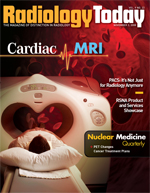
November 11, 2008
How to Avoid the Three Biggest Modifier-25 Pitfalls
By G. John Verhovshek, MA, CPC
Radiology Today
Vol. 9 No. 22 P. 8
In a November 2005 report, the Office of Inspector General found that more than one third of all the modifier-25 claims it had reviewed failed to meet coding requirements, resulting in $538 million in improper payments for one year alone.
Overpayments are not the whole story, though. Consider that each missed opportunity to report a significant, separately identifiable evaluation and management (E/M) service means a loss of anywhere from tens to hundreds of deserved reimbursement dollars per case.
To guide payers and providers alike, the Office of Inspector General identified three key areas of concern for modifier 25, which deals with significant, separately identifiable E/M service by the same physician on the same day of a procedure or other service claims. Radiology practices that heed these critical requirements will improve compliance and reimbursement:
• E/M services billed using modifier 25 must be significant, separately identifiable, and above and beyond the usual preoperative and postoperative care associated with the procedure. Under CPT and Centers for Medicare & Medicaid Services (CMS) guidelines, all procedures and services—from common diagnostic tests to the most complicated surgery—include an “inherent” E/M component. Therefore, any E/M service a radiologist reports separately must “go beyond” the minimal evaluation that normally accompanies any other same-day service(s) or procedure(s).
For example, the CMS guidelines written into the national Correct Coding Initiative specify that a separate E/M service is not appropriate when radiologist interaction with a patient involves “limited pertinent historical inquiry about reasons for the examination, the presence of allergies, acquisition of informed consent, discussion of follow-up, and the review of the medical record.” Correct Coding Initiative rules further specify that if an evaluation “is limited to whether or not the procedure should be performed, whether comorbidity may impact the procedure, or involves discussion and education with the patient, an evaluation/management code is not reported separately.”
For image-guided interventions, modifier 25 will apply most frequently when a radiologist sees a patient for evaluation of certain signs or symptoms and performs a procedure on the same day to help establish a diagnosis and/or resolve an underlying condition.
For example, following consultation for an inpatient with acute ischemia of the foot, the radiologist performs same-day angiography and mechanical thrombectomy of the popliteal artery. In this scenario, the radiologist would report the angiography (eg, 75716, Angiography, extremity, bilateral, radiological supervision and interpretation) with modifier 26, Professional component. In addition, the radiologist would also report the popliteal artery thrombectomy (eg, 37184, Primary percutaneous transluminal mechanical thrombectomy, noncoronary, arterial or arterial bypass graft, including fluoroscopic guidance and intraprocedural pharmacological thrombolytic injection[s]; initial vessel) and catheter placement (eg, 36247, Selective catheter placement, arterial system; initial third order or more selective abdominal, pelvic or lower extremity artery branch, within a vascular family).
Finally, the radiologist should also claim the same-day E/M service using an appropriate inpatient consultation code (eg, 99253, Inpatient consultation for a new or established patient), with modifier 25. In this case, a separate E/M was essential to determine the need for the procedures that followed.
Always remember to append modifier 25 to the E/M code, not to other same-day procedure codes.
• Appropriate documentation of both E/M services and procedures must be maintained to support claims for payments using modifier 25. To support a significant and separately identifiable E/M service, the available documentation must describe a clear history, exam, and medical decision making apart from any other procedures the radiologist performs on the same day. In other words, documentation should unambiguously support every code on a claim.
Explanatory text for modifier 25 in the CPT manual stresses, “a significant, separately identifiable E/M service is defined or substantiated by documentation that satisfies the relevant criteria for the respective E/M service [reported].” This documentation must be available upon payer request.
Providers can help substantiate a separate E/M service by physically separating the documentation for the E/M service from documentation for any other same-day procedure(s) or service(s). That is, the radiologist should document the history, exam, and medical decision making in the patient’s chart and record the procedure notes on a different sheet attached to the chart or in a different section within the electronic medical record. This demonstrates to the payer and the coding staff the distinct nature of the E/M service.
At a minimum, radiologists should document same-day E/M services at least as well as if they had not provided any other procedure(s) or service(s).
• Modifier 25 should only be used for E/M services provided on the same day as another procedure. When the radiologist conducts an E/M service only, modifier 25 is not necessary.
Consider again the example above but with a slight change in circumstances. In this instance, the radiologist provides the inpatient consult evaluation on Wednesday and performs the follow-up angiography and mechanical thrombectomy of the popliteal artery on Friday.
For the initial encounter, the radiologist would report only the inpatient consultation (99253). Modifier 25 is not required because the radiologist provided no other service(s) or procedure(s) for the patient on the same day.
For the angiography and mechanical thrombectomy of the popliteal artery on the later date of service, the radiologist would claim the appropriate procedure codes (75716-26, 37184, and 36247) only.
Unless the patient experiences a significant worsening of symptoms or a new complaint that requires a separate evaluation, another E/M service for Friday’s encounter is not warranted. Remember: the radiologist has already evaluated the patient for the same complaint during the earlier E/M visit. The radiologist may provide a cursory exam immediately prior to the angiography and thrombectomy, but such an evaluation is neither significant nor separately identifiable.
— G. John Verhovshek, MA, CPC, is director of clinical coding communications for the American Academy of Professional Coders, the nation’s largest education and credentialing association for medical coders.
